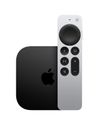After years of proprietary adapters and ugly wall-wart power supplies, the tech world has finally coalesced around a charging standard. Well, sort of: We’re already seeing some fragmentation because of the new USB-C connector, which could eventually replace USB, as well as what is thankfully turning out to be a short-lived obsession Samsung had with larger USB micro-B connectors for its Galaxy line. But otherwise, and with the obvious exception of Apple’s Lightning connector, micro USB has destroyed the industry’s penchant for custom ports.

But there’s a new problem: USB power. Not all USB chargers, connectors, and cables are born equal. You’ve probably noticed that some wall chargers are stronger than others. Sometimes, one USB socket on a laptop is seemingly more powerful than the other. On some desktop PCs, even when they’re turned off, you can charge your smartphone via a USB socket. It turns out there’s a method to all this madness — but first we have to explain how USB power actually works.
NEW SPECS
There are now four USB specifications — USB 1.0, 2.0, 3.0, and 3.1 — in addition to the new USB-C connector. We’ll point out where they significantly differ, but for the most part, we’ll focus on USB 3.0, as it’s the most common. In a USB network, you have one host and one device. In almost every case, your PC is the host, and your smartphone, tablet, or camera is the device. Power always flows from the host to the device, although data can flow in both directions, such as when you copy files back and forth between your computer and your phone.
Okay, now the numbers. A regular USB 1.0 or 2.0 socket has four pins, and a USB cable has four wires. The inside pins carry data (D+ and D-), and the outside pins provide a 5-volt power supply. USB 3.0 ports add an additional row of five pins, so USB 3.0-compatible cables have nine wires. In terms of actual current (milliamps or mA), there are three kinds of USB port dictated by the current specs: a standard downstream port, a charging downstream port, and a dedicated charging port. The first two can be found on your computer (and should be labeled as such), and the third kind applies to “dumb” wall chargers.
Denne historien er fra June 2017-utgaven av PC Magazine.
Start din 7-dagers gratis prøveperiode på Magzter GOLD for å få tilgang til tusenvis av utvalgte premiumhistorier og 9000+ magasiner og aviser.
Allerede abonnent ? Logg på
Denne historien er fra June 2017-utgaven av PC Magazine.
Start din 7-dagers gratis prøveperiode på Magzter GOLD for å få tilgang til tusenvis av utvalgte premiumhistorier og 9000+ magasiner og aviser.
Allerede abonnent? Logg på

AUDIO
AUDIO

SMART HOME
SMART HOME

T Mobile
Mobile

Lenovo Legion 5 Pro Gen 7 (2022): Nearly an Editors' Choice
A solid gaming laptop for under 2,000

Apple TV 4K 3rd Generation): Best for the Apple-Centric
A powerful, feature-rich media streamer that’s pricier than most

20 Tips for Leveling Up Your Work-at-Home Game
Whether you're new to working remotely or just looking fo do if beffer, fhese fips can help you stay productive and maintain balance.

12 Google Calendar Tricks You're Probably Not Using
Wondering how to share your Google Calendar? Want to add a new calendar? Here are the tips you need.

SimpliSafe Home Security System: Affordable Ease of Use
Affordable security with a focus on flexibility

Honda Unveils First All-Electric SUV, Built on GM's Battery Platform
The Honda Prologue battery-electric SUV arrives in 2024 and will use the Ultium battery technology developed by General Motors.

We Must Save Streaming Video Before It’s Too Late
A generation of art risks extinction if the companies that own streaming services don’t believe their vast libraries are worth preserving. We have to act now to save it.